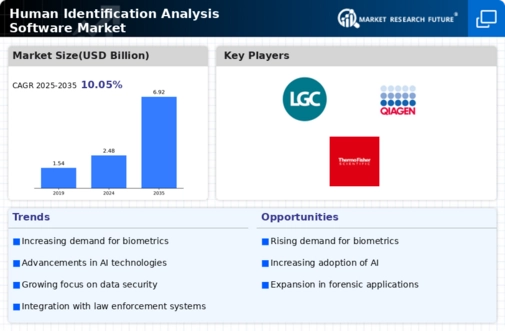Market Share
Human Identification Analysis Software Market Share Analysis
The Human Identification Analysis Software Market is a dynamic and competitive space where companies strive to establish and expand their market share. This sector plays a crucial role in forensic science, genetics, and healthcare, making market positioning strategies essential for sustained growth. To capture market share, every manufacturer has to remain at the cutting edge of technology. The continuous investment in R&D guarantees companies are able to implement the latest features which would increase accuracy and efficiency. One of the most common trends is integration with emerging technologies such as artificial intelligence and machine learning. Global strategic partnerships and collaborations can easily change how a market is positioned. The collaboration with forensic laboratories, law enforcement agencies and research institutions increases the customer base, while elevating credibility as well as broadening market. Companies usually spend on customer education and training so as to enable end-users. Offering complete training on software usage and updates guarantees that the clients achieve optimal benefits from the product. Such a result can bring customer loyalty and good word- of mouth promotion which will, in turn, add to the market share growth. In competing for product quality, the provision of competitive prices is necessary. A balanced pricing strategy can attract customers on a budget and may capture more of the market. In this respect, the popular strategies tend to be discounts, subscription models and payment flexibility. Improvement in market share is achieved through entering the hitherto unexploited foreign markets. Regional regulations, compliance requirements and cultural peculiarities should be understood. A global reach, apart from widening the customer base also helps in diversifying revenue streams. Customer feedback and the flexibility to change features based on that information is a dynamic approach. The frequent updates, in accordance with the user suggestions show commitment to customer satisfaction, which develops a good relationship and loyalty. Market share positioning is incomplete without developing a good brand image and making sure that reputation remains intact. By pursuing ethical business practices, transparency in communication and a dedication to data protection you are able to build trust with not only your existing customers but also those who may consider becoming such. Meeting with industry standards and regulatory obligations is a no-go zone. Compliance with the legal and ethical standards increases credibility. The compliance certifications can serve as a marketing tool, after all the product is reliable and legal.






Leave a Comment